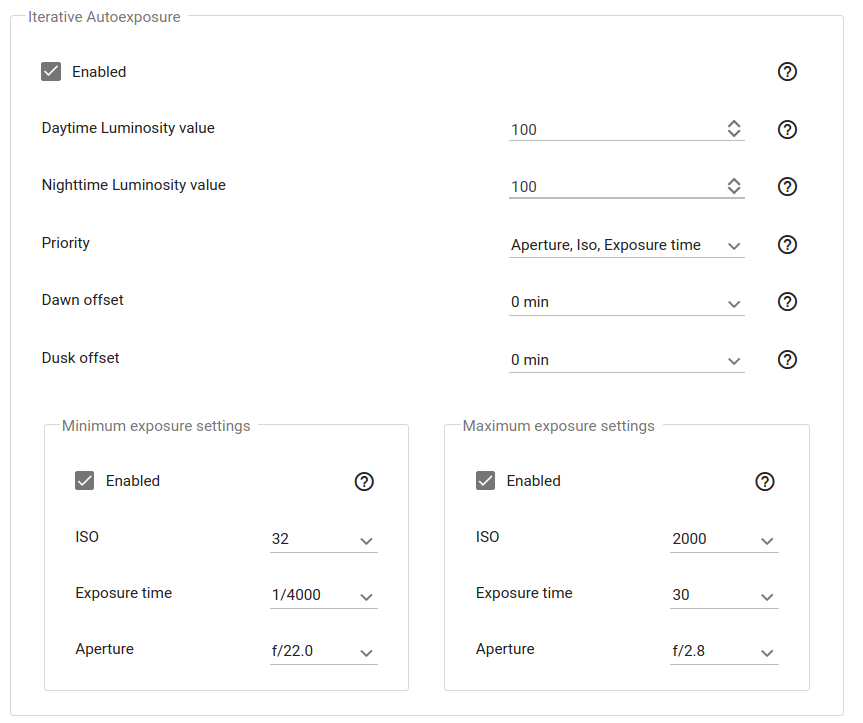Configure iterative auto-exposure
Iterative auto-exposure is a new way of handling environment-sensitive exposure for your camera. It is vastly more reliable and versatile than our older predictive auto-exposure algorithm, since it captures an image of the current environment and analyses it, making adjustments as needed, and if necessary repeat that process until the exact configured luminosity for an image has been found.
Obviously, this means that a camera may capture multiple images before it found the right settings. For this reason, iterative auto exposure is only available for Cameras with full electronic shutters (currently supported are Nikon Z6 and Z7), since the additional wear and tear would significantly decrease the lifetime of cameras with moving parts. The iterative auto exposure configuration will become visible in the portal when you select one of those models.
Also note that iterative auto exposure is not available if conventional auto exposure is selected.
Important: Your camera must be in manual mode for iterative auto exposure to do its job effectively, as it will assume direct control over all exposure parameters.
There are a few parameters to cover here, so let's get started:
Enabled
Activate or deactivate iterative autoexposure for this camera.
Daytime and nighttime luminosity
The desired average grey-luminosity the image should have at daytime resp. nighttime. The algorithm will attempt its best to hit that luminosity within a tolerance of +-5, and it will also try to find a smooth transition between both values during dawn or dusk.
Priority
Contrary to our conventional auto exposure, iterative auto exposure does not work with the cameras abstract EV value, instead it will control the three major exposure parameters itself. These are Aperture (f-number), exposure time (shutterspeed) and iso.
The priority parameter lets you adjust which settings the algorithm should prefer in what order. If your highest priority is exposure time and the image is too dark, it will first increase exposure time to its maximum and only start to adjust the other parameters if it cannot reach the desired luminosity using that parameter.
Dawn and Dusk offset
The transition between daytime and nighttime luminosity is based on the dawn and dusk time of the camera's location, given in the camera configuration above. When these values are set to something else than zero, the sunset and sunrise time is offset to a later (positive value) or earlier (negative value) point of time.
Minimum and Maximum exposure settings
Just selecting the priority is often not enough. There are plenty of situations where you might want to for example primarily vary exposure time to reach the desired luminosity, but still never want the exposure time to be longer than 10 seconds. The minimum and maximum settings allow you to constrain the range for the individual exposure parameters to less than the camera would be capable of. In effect, this means that the priority will shift to the next parameter as soon as the defined limit of this parameter is reached, instead of only shifting the priority when the physical limits of the camera in one particular parameter are reached.
